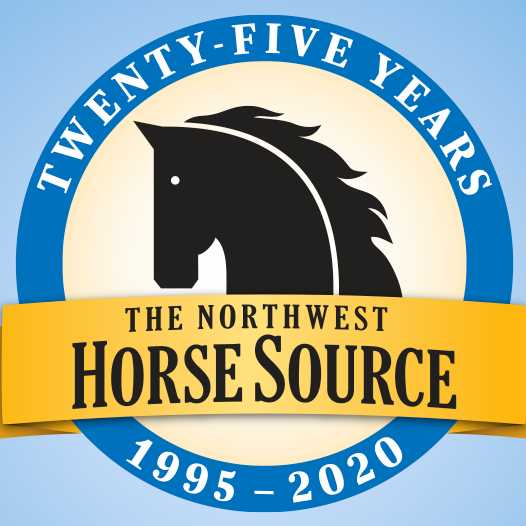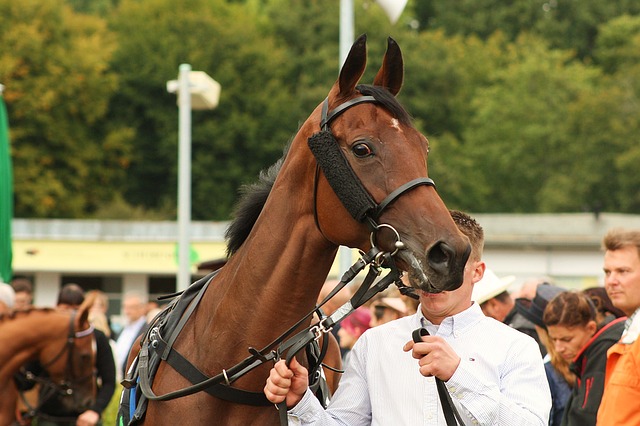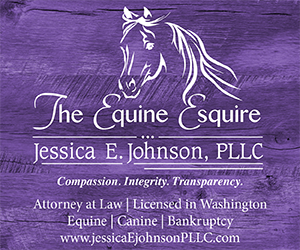 Lexington, KY – Low body condition score and poor top line are symptoms of stress in performance horses. The most effective approach to correcting these conditions is to figure out what is causing the stress and taking appropriate steps to alleviate the stress factors. Correcting low body condition and poor top line usually requires more than just increasing the amount and/or quality of feed.
Lexington, KY – Low body condition score and poor top line are symptoms of stress in performance horses. The most effective approach to correcting these conditions is to figure out what is causing the stress and taking appropriate steps to alleviate the stress factors. Correcting low body condition and poor top line usually requires more than just increasing the amount and/or quality of feed.
Racehorses are exposed to many physical, emotional and environmental stress factors. Some of the more common conditions that can cause stress are:
- Digestive disorders such as gastric ulcers and/or intestinal inflammation.
- Chronic pain resulting from:
- Joint inflammation
- Micro-fractures
- Muscle soreness
- Vertebrae and/or other skeletal misalignment
- Poor innervation and/or nerve function
- Hoof soreness
- Respiratory ailments
- Exercise Induced Pulmonary Hemorrhage
- Low grade infections/chronic rhinitis
- Hyper-reactivity resulting from bad experiences
- Over-training
An individual racehorse that retires from racing in less than desired body condition may be suffering from one or more of the stress producing conditions listed above. In most cases, horses that are “stressed out” due to over training and those who are hyper-reactive only require time off and an appropriate place to chill out for a while in order for them to regain desired body condition and improve their mental and emotional stability. Green grass, room to run, plenty of sunshine, fresh air and a handler that knows how to speak “equi-nese” go a long way towards alleviating many of the stress factors performance horses are routinely exposed to. However, most horses that retire from racing with less than desired body condition will present with one or more of the stress producing conditions listed above. Figuring out which conditions are primary and which are secondary is not always easy or straightforward. For example, a horse with a micro-fracture in a knee may present with inflammation in the hocks and poor muscle development in the hip. The sore hocks and poor muscling are easily discernible so they are treated first, but in this case with only limited success. The limited success in this case is due to the fact that the sore hocks and poor muscling are a result of the horse’s attempts to “off-load” the knee that is causing chronic pain. Once the knee is given time and treatment to heal – presto – the hocks improve as does the muscling in the hip.
Another prime example in retired racehorses is a weak top line caused by intestinal inflammation. The physical activity of racing and race training puts a lot of stress on the digestive system of the horse leading to inflammation of the small intestine and/or large intestine. An inflamed intestine reduces the horse’s ability to assimilate nutrients from the diet and results in abnormal function of the immune system. These two effects of intestinal inflammation make the horse more vulnerable to multiple stress factors with the result being a weak top line and low body condition score. The correct approach for this horse is to re-condition the digestive system and immune system. When this is done satisfactorily the horse’s body condition and top line will take care of themselves.
It is beyond the scope of this one article to cover all the stress producing conditions listed above and the recommended approaches to alleviating them; hopefully these will be topics for future newsletters. The take home message for today is that most horses that retire from the racetrack in less than desired body condition are usually exhibiting the effects of stress. Letting the retired racehorse “be a horse” for a while with adequate turn out and appropriate handling will reduce the horse’s stress level. If 30 days of being turned out in a stress free environment does not result in your horse’s health and well being returning to the desired level, it will be time to investigate other factors that may not be easily seen but are still causing stress.
Visit our blog at www.equivision.com to read more educational articles.
About EquiVision
The nutritional products offered by EquiVision were originally developed to address a specific need; we have never developed a product simply to compete with other products that were popular in the marketplace. Our products are not the cheapest, but they are proven to work. We do not make false claims about our products; we will accurately tell you what to expect from our products and also tell you what not to expect. If a product from another company is what is best for your horse, we will advise you accordingly. If you are a current customer using EquiVision products in your horse’s diet our, consulting services are available to you free of charge. We truly are “Looking After Your Horse’s Future, Today”.

News from the horse industry. Sharing today’s information as it happens. The Northwest Horse Source is not responsible for the content of 3rd party submissions.





